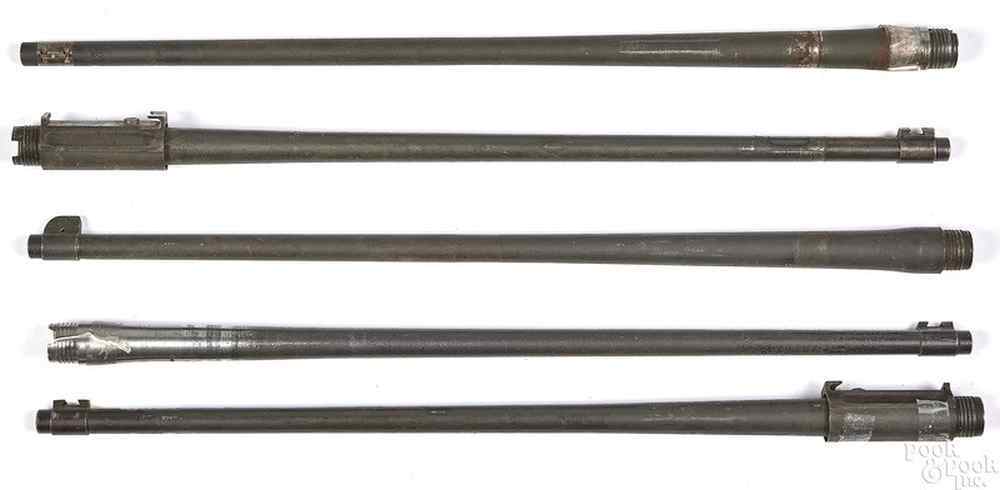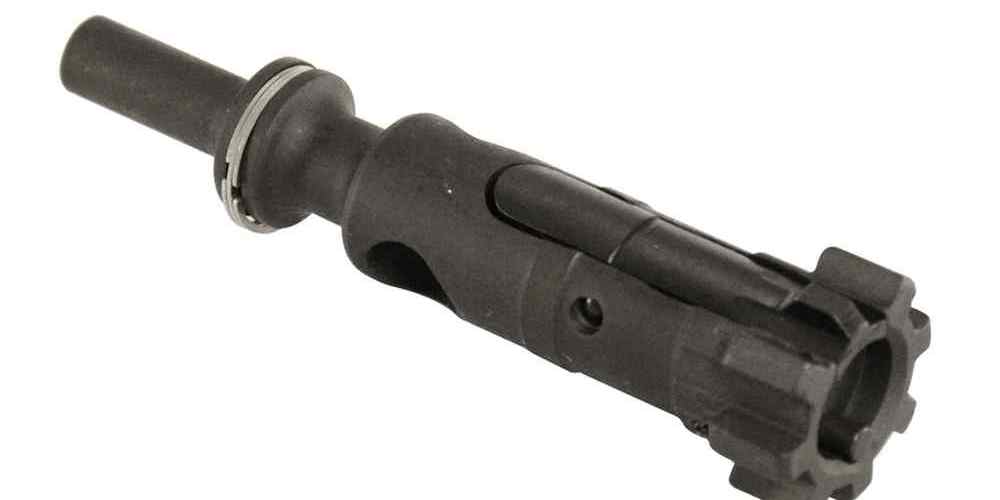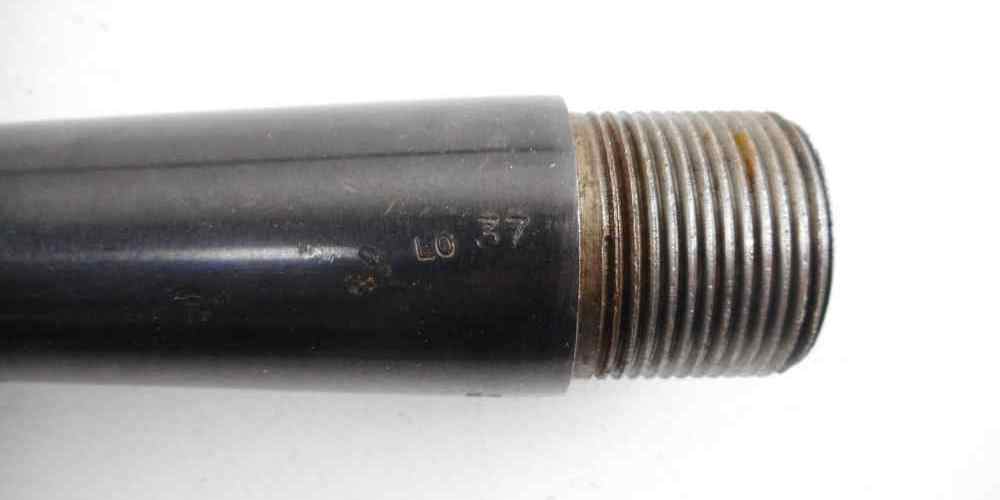“Revolutionizing marksmanship with cutting-edge innovations.”
Smart Scope Technology
Rifle technology has come a long way in recent years, with advancements in materials, design, and functionality. One area that has seen significant growth is smart scope technology. Smart scopes are changing the way shooters interact with their rifles, providing a wealth of information and features that were previously unavailable.
One of the most exciting developments in smart scope technology is the integration of rangefinders. These scopes can calculate the distance to a target and adjust the reticle accordingly, making long-range shooting much more precise. This feature is especially useful for hunters who need to quickly determine the distance to their prey in order to make an accurate shot.
Another key feature of smart scopes is the ability to connect to a smartphone or tablet via Bluetooth. This allows shooters to access a wealth of information, such as weather conditions, ballistics data, and even live video feeds from the scope itself. This level of connectivity opens up a whole new world of possibilities for shooters, allowing them to make more informed decisions and improve their accuracy.
Some smart scopes even come equipped with built-in cameras, allowing shooters to record their shots and review them later. This can be incredibly useful for training purposes, as shooters can analyze their technique and make adjustments as needed. Additionally, the ability to record shots can provide valuable evidence in the event of a dispute or legal issue.
In terms of design, smart scopes are becoming increasingly compact and lightweight, making them easier to mount on a rifle without adding unnecessary bulk. This is especially important for hunters who need to move quickly and quietly through the wilderness. Additionally, many smart scopes now come with customizable reticles, allowing shooters to choose the style and color that best suits their preferences.
One of the most exciting trends in smart scope technology is the integration of artificial intelligence. Some scopes are now equipped with AI algorithms that can analyze shooting conditions in real-time and make adjustments to the reticle automatically. This level of automation can greatly improve accuracy, especially in challenging shooting scenarios.
As smart scope technology continues to evolve, we can expect to see even more innovative features and capabilities. For example, some manufacturers are experimenting with augmented reality displays that overlay information directly onto the shooter’s field of view. This can provide valuable data without requiring the shooter to take their eyes off the target.
Overall, the future of rifle parts is looking brighter than ever, thanks to the emergence of smart scope technology. Shooters can expect to see more advanced features, improved connectivity, and enhanced accuracy in the years to come. Whether you’re a seasoned hunter or a casual shooter, smart scopes are sure to revolutionize the way you interact with your rifle. So keep an eye out for the latest developments in smart scope technology, and get ready to take your shooting game to the next level.

Carbon Fiber Barrel Manufacturing
When it comes to rifle parts, one of the most exciting emerging technologies is carbon fiber barrel manufacturing. Carbon fiber is a lightweight, high-strength material that is revolutionizing the firearms industry. In this article, we will explore the benefits of carbon fiber barrels, the manufacturing process, and the future trends in this rapidly evolving field.
Carbon fiber barrels offer several advantages over traditional steel barrels. First and foremost, carbon fiber is significantly lighter than steel, which can reduce the overall weight of the rifle and improve handling and maneuverability. This is especially important for hunters and competitive shooters who may need to carry their rifles for long periods of time or shoot in challenging positions.
In addition to being lightweight, carbon fiber barrels are also incredibly strong. The fibers are woven together in a tight pattern, creating a barrel that is resistant to bending, warping, and other forms of damage. This durability can improve the accuracy and consistency of the rifle, ensuring that each shot lands exactly where it is intended.
The manufacturing process for carbon fiber barrels is complex but highly efficient. The first step is to create a mold of the desired barrel shape, which is then coated with a release agent to prevent the carbon fiber from sticking. Next, layers of carbon fiber fabric are laid down in the mold and infused with resin. The entire assembly is then placed in an autoclave, where heat and pressure are applied to cure the resin and bond the fibers together.
One of the key advantages of carbon fiber barrel manufacturing is the ability to customize the barrel to meet specific performance requirements. By adjusting the number of fiber layers, the orientation of the fibers, and the resin used, manufacturers can tailor the barrel to achieve optimal stiffness, strength, and weight. This level of customization is unmatched in traditional steel barrel manufacturing and allows shooters to fine-tune their rifles for maximum performance.
Looking to the future, there are several trends in carbon fiber barrel manufacturing that are likely to shape the industry in the coming years. One of the most exciting developments is the use of additive manufacturing, also known as 3D printing, to create carbon fiber barrels. This technology allows for even greater design flexibility and precision, opening up new possibilities for innovative barrel shapes and configurations.
Another trend to watch is the integration of sensors and smart technology into carbon fiber barrels. By embedding sensors that can monitor barrel temperature, pressure, and other variables, shooters can receive real-time feedback on their rifle’s performance and make adjustments as needed. This level of data-driven insight has the potential to revolutionize the way shooters train and compete, leading to improved accuracy and consistency.
In conclusion, carbon fiber barrel manufacturing is a game-changing technology that is reshaping the future of rifle parts. With its lightweight, high-strength properties and customizable design options, carbon fiber barrels offer unparalleled performance and versatility. As manufacturers continue to innovate and push the boundaries of what is possible, we can expect to see even more exciting developments in this field in the years to come.
Modular Chassis Systems
When it comes to rifle parts, one of the most exciting developments in recent years has been the rise of modular chassis systems. These innovative systems allow shooters to customize and upgrade their rifles with ease, providing a level of versatility and adaptability that was previously unheard of. In this article, we will explore the emerging technologies and trends in modular chassis systems, and discuss how they are shaping the future of rifle customization.
One of the key benefits of modular chassis systems is their ability to accommodate a wide range of accessories and attachments. Whether you are looking to add a new scope, bipod, or muzzle brake, a modular chassis system can provide the flexibility you need to make your rifle truly your own. This level of customization is particularly appealing to competitive shooters and hunters who require precise and reliable equipment to achieve their goals.
Another advantage of modular chassis systems is their durability and stability. By providing a solid foundation for your rifle, these systems can help improve accuracy and consistency, even in challenging shooting conditions. This is especially important for long-range shooters who rely on their equipment to perform at the highest level.
In addition to their practical benefits, modular chassis systems also offer a sleek and modern aesthetic that is sure to turn heads at the range. With their clean lines and futuristic design, these systems are a far cry from the traditional wooden stocks of yesteryear. For shooters who value both form and function, a modular chassis system is the perfect choice.
As technology continues to advance, we can expect to see even more exciting developments in the world of modular chassis systems. One trend that is already gaining traction is the use of lightweight materials such as carbon fiber and aluminum. These materials offer the perfect balance of strength and weight, making them ideal for shooters who demand the best performance from their equipment.
Another emerging trend in modular chassis systems is the integration of advanced features such as adjustable length of pull and comb height. These features allow shooters to fine-tune their rifles to fit their individual preferences and shooting style, resulting in a more comfortable and ergonomic shooting experience.
In conclusion, the future of rifle parts is looking brighter than ever thanks to the rise of modular chassis systems. With their versatility, durability, and sleek design, these systems are revolutionizing the way shooters customize and upgrade their rifles. As technology continues to evolve, we can expect to see even more exciting developments in this space, making modular chassis systems a must-have for any serious shooter.
3D Printed Components
The world of rifle parts is constantly evolving, with new technologies and trends shaping the future of firearms. One of the most exciting developments in recent years is the rise of 3D printed components. 3D printing, also known as additive manufacturing, has revolutionized the way that rifle parts are designed and produced.
One of the key advantages of 3D printing is its ability to create complex geometries that would be impossible to manufacture using traditional methods. This means that designers can create parts that are lighter, stronger, and more efficient than ever before. In addition, 3D printing allows for rapid prototyping, which means that new designs can be tested and refined quickly, speeding up the development process.
Another benefit of 3D printing is its flexibility. With traditional manufacturing methods, producing a new part can be time-consuming and expensive. However, with 3D printing, designers can quickly iterate on their designs and produce custom parts on demand. This means that rifle owners can easily customize their firearms to suit their specific needs and preferences.
In addition to its design flexibility, 3D printing also offers cost savings. While the initial investment in a 3D printer can be significant, the cost per part is often lower than traditional manufacturing methods. This is especially true for small production runs or one-off custom parts, where the economies of scale of traditional manufacturing do not apply.
One of the most exciting applications of 3D printing in the world of rifle parts is the production of metal components. While early 3D printers were limited to plastics and other low-strength materials, recent advances in technology have made it possible to print metal parts with the same level of precision and quality as traditional machining methods. This opens up a whole new world of possibilities for rifle designers, who can now create parts that were previously impossible to manufacture.
In addition to metal components, 3D printing is also being used to produce other types of rifle parts, such as stocks, grips, and accessories. These parts can be customized to fit the shooter’s hand perfectly, improving comfort and accuracy. In addition, 3D printing allows for intricate designs and patterns that would be difficult or impossible to achieve with traditional manufacturing methods.
While 3D printing offers many advantages for the production of rifle parts, there are still some challenges that need to be overcome. One of the main issues is quality control. Because 3D printing is a layer-by-layer process, there is a risk of defects or inconsistencies in the final part. However, advances in technology and quality control processes are helping to address these issues, ensuring that 3D printed parts meet the same standards of quality and reliability as traditionally manufactured parts.
Overall, the future of rifle parts is bright, thanks to the emerging technologies and trends in 3D printing. With its design flexibility, cost savings, and ability to produce complex metal components, 3D printing is revolutionizing the way that rifle parts are designed and manufactured. As the technology continues to advance, we can expect to see even more innovative and high-quality rifle parts produced using 3D printing techniques.
Advanced Optics Integration
When it comes to the future of rifle parts, one area that is seeing significant advancements is in the integration of advanced optics. As technology continues to evolve, so too do the capabilities of rifle scopes, sights, and other optical devices. These advancements are not only improving the accuracy and effectiveness of rifles but also enhancing the overall shooting experience for hunters, sports shooters, and military personnel.
One of the most notable trends in advanced optics integration is the use of digital technology. Digital rifle scopes are becoming increasingly popular due to their ability to provide enhanced features such as built-in rangefinders, ballistic calculators, and even video recording capabilities. These scopes allow shooters to quickly and accurately calculate bullet drop, windage adjustments, and other factors that can affect shot placement. Additionally, digital scopes can be easily customized to suit individual preferences and shooting styles, making them a versatile option for a wide range of users.
Another emerging technology in rifle optics is the use of augmented reality (AR) and heads-up displays (HUDs). AR technology overlays digital information onto the shooter’s field of view, providing real-time data on target distance, wind speed, and other relevant factors. HUDs, on the other hand, project this information directly onto the shooter’s eyepiece, allowing for quick and easy access to critical data without having to take their eyes off the target. These technologies are revolutionizing the way shooters engage with their rifles, providing a level of situational awareness and precision that was previously unimaginable.
In addition to digital and AR technologies, advancements in materials and manufacturing processes are also shaping the future of rifle optics. Lightweight materials such as carbon fiber and titanium are being used to create scopes and sights that are not only durable and rugged but also incredibly lightweight. This allows shooters to carry their rifles for extended periods without experiencing fatigue, making them more effective in the field. Furthermore, advancements in precision machining and quality control are ensuring that rifle optics are more reliable and consistent than ever before, providing shooters with the confidence they need to make accurate shots in any conditions.
As the demand for advanced optics integration continues to grow, manufacturers are investing heavily in research and development to bring new and innovative products to market. From smart scopes that can automatically adjust for environmental conditions to thermal imaging devices that can detect targets in complete darkness, the future of rifle optics is bright. These advancements are not only improving the performance of rifles but also expanding the possibilities for shooters in terms of what they can achieve in the field.
In conclusion, the future of rifle parts is being shaped by advancements in advanced optics integration. Digital technology, augmented reality, lightweight materials, and precision manufacturing processes are all contributing to the development of rifle scopes and sights that are more accurate, reliable, and versatile than ever before. As these technologies continue to evolve, shooters can expect to see even more innovative products that will enhance their shooting experience and push the boundaries of what is possible with a rifle. The future of rifle optics is here, and it is an exciting time to be a shooter.







